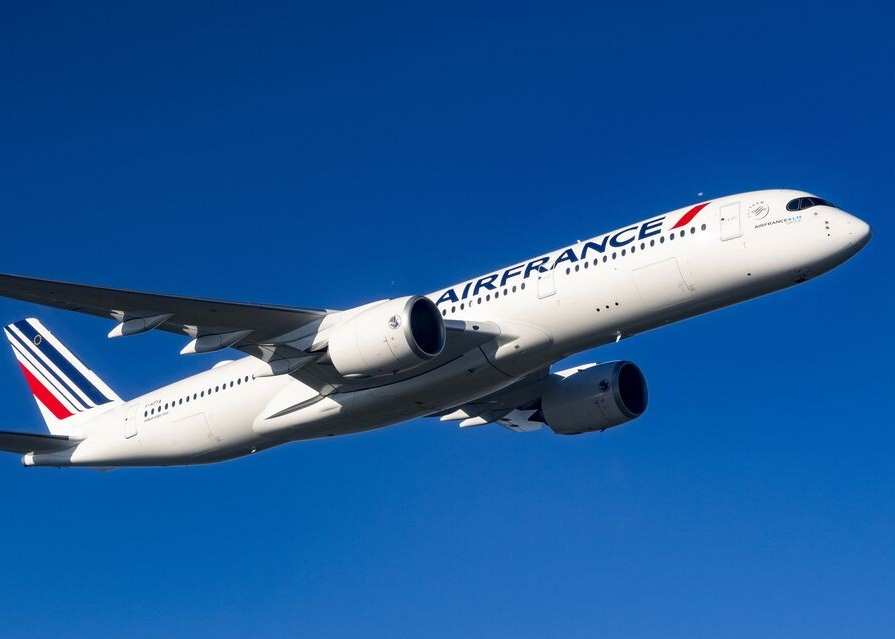GadgetWings
Wings Review: Air France almost finds the future
In our first GadgetWings cabin review, ARTHUR GOLDSTUCK tries the tech in the new Air France business class cabin and finds mixed merits.
After a slow roll-out last year, Air France and KLM has started fitting new high-tech “suites” in all their 777-300s and 777-200s aircraft. We had the opportunity to test the Air France version on a 777-3-00ER plane flying from Paris to Johannesburg, and were both delighted at its promise and disappointed at its delivery.
The highlight of these new suites is not so much technological and mechanical. A sliding door turns the seat into a “privacy suite”, while still giving direct access to the aisle from any seat in the 1-2-1 configuration. A panel separates the middle two seats but can be lowered for those flying together. For the rest, it all provides perfect privacy when seated or lying down.
Wireless and wired in the sky
Unbranded noise-reduction headphones are permanently connected to a socket inside a storage cabinet in the suite, eliminating both the inevitable search for the socket in the dark, and wires becoming entangled. While USB-A and -C ports lurk below the cabinet, the suite introduces an anti-entanglement first (for this writer): a wireless charging pad for smartphones. This promises multiple benefits, from avoiding inevitable entangling of cables to convenience of recharging any time.
However, the induction charger suffers from a common issue with on-board tech – it appears such things rarely tested between flights, and when they don’t work, the cabin staff can do little more than express surprise. In our case, it simply didn’t work, even when tried on two high-end Samsung phones, of 2023 and 2024 vintage.
Travellers are asked not to use the wireless chargers during take-off and landing, but that is a somewhat silly request, given that the charging pad is in the most convenient spot for keeping handsets during a flight. When the charging doesn’t work, it is especially silly to be asked to remove the phone from the pad during landing.
On the other hand, the regular power socket lurking deep inside the suite offered connections for European, American and South African plugs, with no adapter needed, and supported fast charging. Travelling with a fast-charging brick – the Anker 735, a 65W charger – came into its own here. The moment I plugged in my phone at 27% full, it told me it would be fully charged in less than an hour.
On-board Wi-Fi appears to work from take-off to landing, but the free option only allows text messaging, and then only via a limited range of messaging services. This includes WhatsApp and, surprisingly, messages posted in Slack – if you happen to be collaborating with team members from the clouds. However, the latter are only visible as notifications, and not in the Slack app itself. Email is also not classified as messaging, no matter how text-based it may be. On the plus side, the connection was seamless, and did not have to be reestablished throughout the 11-hour flight, as is the case with most airlines.
Bigger-screen entertainment
The business class seats are fitted with massive 17.3-inch 4K anti-glare screens, a 12-language menu, and a massive movie library. The options available last week, however, were deeply disappointing. The New Releases section offered a fair variety, although not offering anything to fans of science-fiction and fantasy beyond Kingdom of the Planet of the Apes and Godzilla x Kong. Not a fan of simian SF? Can’t help you then. Oh yes, Dune Part Two was available, but not Part One, in case you didn’t want to start the story in the middle.
Down in the genre menu, the “Sci-fi” section produced a grand total of 5 movies, but strangely only the Godzilla movie from the new releases. The rest were made up of more simian fare, namely Rise of the Planet of the Apes, along with the 2019 Detective Pikachu, 2016 Midnight Special and, dragged from the dusty vaults of old classics none of us would have watched 12 times already, Mars Attacks! circa 1996.
Having said that, the infotainment system supports Bluetooth, allowing advanced download and then the in-flight version of bigger-screen viewing of the Netflix or Showmax movies you actually do want to watch.
In an attempt to use my own earphones, I tried to pair the on-board Bluetooth with two options: it refused to see Samsung Galaxy Buds, but it paired seamlessly with Huawei FreeClips. Unfortunately, the sound quality was so poor, the supplied headphones were the only workable option. This could be due to low-quality Bluetooth transmitters used on the aircraft, or electronic interference from the aircraft’s other systems. It could even have something to do with the fact that both in-flight infotainment systems and high-end earbuds use compressed audio formats. Put them together, and the compression is multiplied.
The only thing that can be said about this issue with certainty is that the cabin staff are not trained to assist with high-tech challenges.
Perhaps that is something for Air France to consider next as it attempts to embrace the future of travel.
* Arthur Goldstuck is CEO of World Wide Worx and editor-in-chief of Gadget.co.za and GadgetWings. Follow him on social media on @art2gee.



















